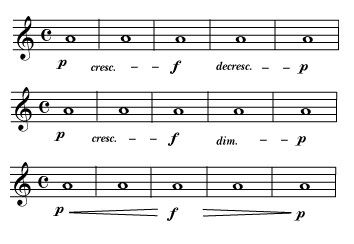Effective Strategies for Teaching Dynamic Levels to High School Age Music Students

Introduction
Music is a universal language that transcends borders, cultures, and time. The understanding and application of dynamic levels are crucial for musicians, as they add depth and emotion to a musical piece. For high school music students, mastering dynamics can be a rewarding journey that enhances their ability to express themselves through music. In this article, we will explore effective ways to teach dynamic levels to high school music students.
- What Are Dynamic Levels?
Dynamic levels in music refer to variations in loudness and intensity throughout a piece. They are essential for conveying emotions and telling a musical story. Dynamic markings are typically indicated in the sheet music and include terms that range from pianissimo to fortissimo.
- Start with the Basics
Before diving into the intricacies of dynamic levels, it's crucial to ensure that high school music students have a solid foundation in music theory. This includes understanding musical notation, scales, and the fundamentals of rhythm and tempo. Once these basics are in place, students can better appreciate the nuances of dynamics.
- Terminology
Even though high school age students may be new to the world of music theory, learning the technical terms is essential. Just as music itself is another language, so it has its own set of linguistic notations that accompany the notes. and instead focus on the concepts.
The terms can be likened to a lot of English words. Forte is like a fort – strong (loud). Piano can be linked to the origin of the word piano (from pianoforte, meaning soft-loud). Mezzo (as in mezzo forte or mezzo piano) is like the mezzanine in some buildings – a middle floor (often not numbered). Crescendo is like the crest of a wave – rising higher. Diminuendo is like diminish.
- Listening Exercises
Listening to music is one of the best ways to understand dynamic levels. Introduce students to various pieces of music that showcase a wide range of dynamics. Discuss how these changes in volume affect the mood and overall impact of the music. You can include classical pieces, contemporary songs, and even film scores to provide a diverse listening experience.
Another aspect of dynamic levels is its relative loudness. A good way to demonstrate this is to play a section of a recording of a piece with the volume on low. The forte and piano sections will be relatively louder and softer, but overall will not be that loud. Then, play the same section with the volume level higher (but not enough to damage ears!). Now, even the softer sections will be louder than the first playing.
This is important to remember when analyzing the playing space in which an ensemble will play. A small space will require an overall lower volume, while a larger space needs enough volume so that the softest passages can be heard throughout the hall.
- Visual Aids
Visual aids can be incredibly helpful for high school students. Consider using dynamic level charts with graphics or symbols that represent different levels of loudness. This visual reference can serve as a quick guide when reading sheet music.
There are some games that can be played while learning from visual aids. One might be for the teacher/director to establish what the volume for mezzo forte (mf) is by saying his or her name at that volume. Then, when the director holds up each card with a dynamic symbol on it, the students can say their names at that volume level. The director can change the level of the mf baseline to help emphasize the concept discussed under #4, Listening Exercises.
Another good game involves playing a piece of music and having students raise or lower their hands incrementally to indicate the current dynamic level. This interactive approach helps them internalize the concept.
- Play with Instruments
If these lessons are part of a general music type class, then the teacher might allow students to experiment with different musical instruments to understand how dynamics work in practice. For example, playing a piano softly versus forcefully, or plucking a guitar string gently as opposed to aggressively, can demonstrate the concept of dynamic contrast.
If these lessons are for established instrumental or vocal ensembles, then listening to individual instruments or voices can help students understand some of the nuances of dynamic levels.
For example, a flute player may think that the mezzo forte being played is about right, although in reality it may not be loud enough. Meanwhile, a French horn player may not realize that the mf being played is too loud because of the inherent design of the horn.
Another situation to explore in a choral group is the difference in singing high notes versus low notes. Higher notes, in any part, seem to get louder the higher they get and vice versa. This my require some extra vocal coaching to make sure that the correct dynamic is maintained throughout the singer’s vocal range.
- Dynamics in Context
To make dynamic levels more relatable, provide students with the historical and emotional context of a musical piece. For instance, discuss how dynamics were used in classical compositions to convey different emotions or how they are employed in modern songs to create tension or excitement.
In the Middle Ages and throughout the baroque era, variations in volume were achieved mostly by adding or subtracting instruments since most of them had very limited dynamic ranges. This is called Terraced Dynamics because there were no gradual additions or subtractions of instruments, rather, the effect was more sudden, like stepping onto a terrace. That’s why there are few, if any, dynamic markings in much of the music of that era.
With the invention of the pianoforte, otherwise known simply as the piano, and the improvement of other instruments to allow for a wider dynamic range, gradual volume changes in music became more used and popular. Composers like Beethoven were well-known for such drastic variations.

- Expressive Markings
Discuss the importance of expressive markings within a musical score. These notations, such as crescendo, and diminuendo are essential for conveying changes in dynamic levels. Other markings such as dolce or marcato, or articulations such as staccato, tenuto, and accents should affect the dynamics, but only for the length of the note or section to which it is attached.
- Ensemble Practice
Again, if this is part of a general music class, then encourage them to perform in groups, whether it's a choir, orchestra, or band. Ensemble settings provide opportunities to practice dynamics in a real musical context, where each student's contribution affects the overall sound.
If this is part of an established ensemble, practicing the dynamics at an exaggerated level may help students to internalize the terms and play them better. After the exaggerated rehearsals, the players may then be directed to play the dynamics at their proper levels.
- Individual Performance
In addition to ensemble playing, encourage individual performance. Each student can take turns performing a piece and focus on applying dynamic levels effectively. This helps build their confidence and showcases their progress.
- Personal Interpretation
Teach your high school music students that dynamics are not set in stone but can be interpreted differently by each musician. Encourage them to express their emotions and personality through their interpretation of dynamic markings except for number 12!
- The Role of Conductors
Conclusion
For students involved in larger ensembles, emphasize the role of conductors in guiding the dynamics of a performance. Share examples of famous conductors who have brought out the best in orchestras and choirs through their skillful use of dynamics.
Teaching dynamic levels to high school music students is a rewarding journey that enhances their musical expression and understanding. By starting with the basics, helping them understand the terminology, incorporating listening exercises, and making use of interactive activities, you can help your students grasp the importance of dynamics in music. Remember that a solid foundation in music theory, combined with practical experience and a passion for music, will ultimately empower your students to become skilled and expressive musicians.
Salt Cellar Creations understands the beauty and power that learning music instill in a student’s life. We have a growing library of original works and arrangements for Concert band, Choral Ensembles, String Orchestras and more. Explore the offerings HERE.
SCC can also compose an original piece for you or do a custom arrangement for you. There are two ways that this can be done; one is much more affordable than the other. And SCC is always looking for ideas of pieces to arrange or suggestions for original pieces.
We have sold music not only in the US but in Canada, the United Kingdom, France, Australia, and New Zealand. Please visit the WEBSITE or CONTACT US to let us know what we can do for you!